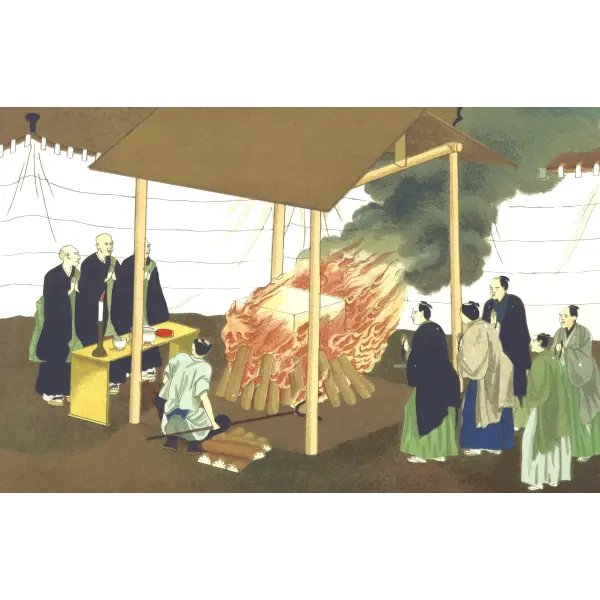Belief
Can a Catholic be Cremated
In the realm of religious practices, few aspects are as deeply intertwined with cultural, spiritual, and historical considerations as the treatment of the deceased. Within the context of the Catholic faith, the question of whether cremation is compatible with its teachings has been the subject of evolving discussions. While traditional burial has long been favored, the Catholic Church has adapted its stance to accommodate changing times and perspectives. This comprehensive article aims to delve into the nuanced history, reasons, and regulations that shape the Catholic Church’s view on cremation, offering a thorough understanding of this complex topic.
Historical Perspective:
The historical perspective on cremation in the Catholic Church is rooted in a preference for traditional burial as an expression of belief in the resurrection of the body. For centuries, cremation was viewed with suspicion due to its association with pagan practices and a perceived contradiction with the concept of bodily resurrection. This stance was reinforced by the fact that early Christians often faced persecution, making traditional burial a way to symbolize their faith in eternal life.
Modern Shifts and Changing Attitudes:
However, as society evolved and cultural practices transformed, the Church recognized the need to adapt its teachings to the contemporary context. The turning point came with the Second Vatican Council in 1963, which acknowledged the changing attitudes towards cremation. The revised Code of Canon Law in 1983 marked a significant milestone by permitting cremation, provided it was not chosen “for reasons contrary to Christian doctrine.” This pivotal shift reflected an understanding that the practice of cremation itself was not inherently at odds with Catholic teachings.
Guidelines and Requirements:
As the Catholic Church embraced a more accepting stance toward cremation, it simultaneously established guidelines to ensure that the practice aligns with its core principles. Several key points highlight the Church’s approach to cremation:
- Preservation of Unity: One of the primary concerns is to maintain the unity of the body, even after death. The Church prohibits practices that would compromise the body’s unity, such as scattering ashes or dividing them among family members. Instead, it emphasizes that cremated remains should be treated with the same reverence and respect as a body.
- Sacred Burial Grounds: The Church encourages the interment of cremated remains in sacred and consecrated places, such as cemeteries, mausoleums, or columbaria. This practice symbolizes the ongoing connection between the deceased and the Christian community.
- Avoiding Profanity: While the Church permits cremation, it cautions against practices that could trivialize the sanctity of the deceased. Transforming ashes into jewelry or other items for non-religious purposes is discouraged, as it can diminish the significance of the remains.
- Preserving Tradition: While the Church now allows cremation, it maintains a preference for traditional burial as a reflection of faith in the resurrection of the body. This preference, however, is not an absolute requirement, and the Church recognizes individual circumstances and cultural considerations.
- Funeral Rites: Regardless of whether the body is buried or cremated, the Church emphasizes the importance of celebrating funeral rites. These rites include a funeral Mass, prayers for the deceased, and the commendation of the soul to God’s mercy. The presence of these rituals ensures that the deceased is honored and remembered in accordance with Catholic tradition.
Conclusion:
In the ever-evolving landscape of religious practices, the Catholic Church’s stance on cremation represents a balance between tradition and adaptability. The historical aversion to cremation, based on concerns about its compatibility with Christian doctrine, has gradually evolved to accommodate the changing needs and attitudes of society. The Church’s guidelines underscore the importance of treating cremated remains with reverence, preserving the unity of the body, and upholding the sacredness of the deceased.
Ultimately, the question of cremation within the Catholic faith is not just a matter of doctrine, but also a reflection of the Church’s sensitivity to the diverse ways people honor their loved ones and approach the concept of the afterlife. As the Catholic Church continues to engage with contemporary practices and concerns, its teachings remind us of the significance of both honoring the past and embracing the present. In a world where cultural and spiritual considerations intertwine, the Church’s approach to cremation invites us to navigate the intricate balance between faith, tradition, and the evolving needs of a changing world.
About Author

























